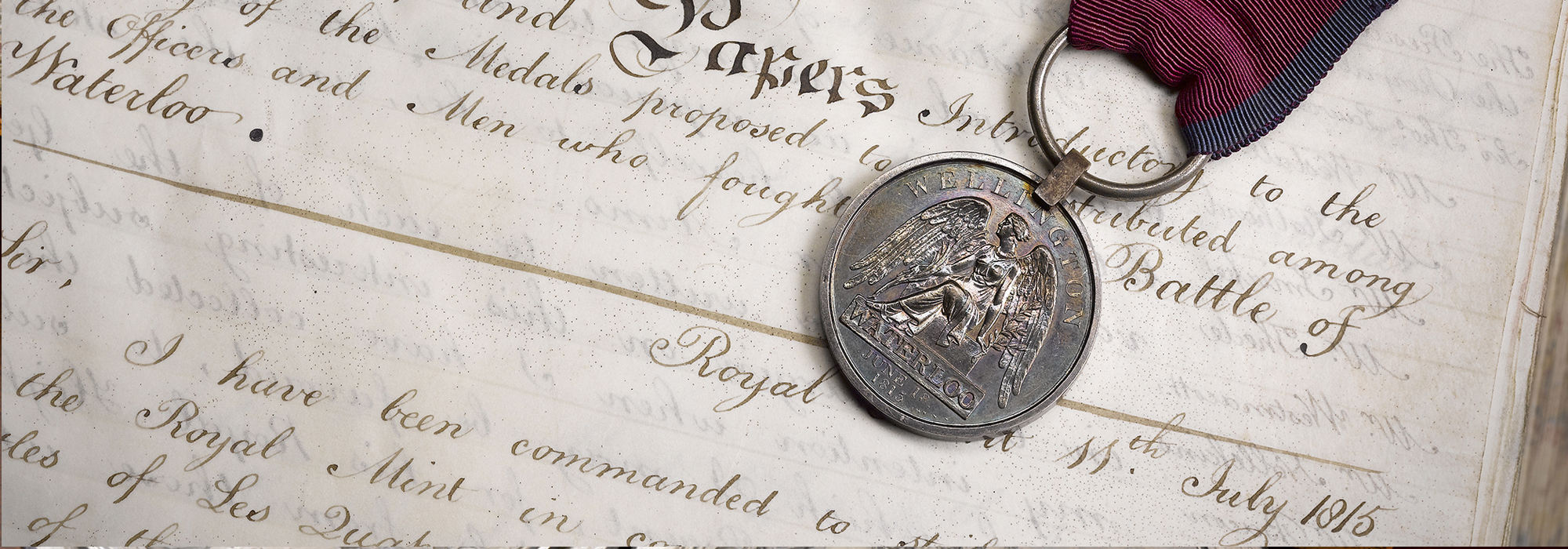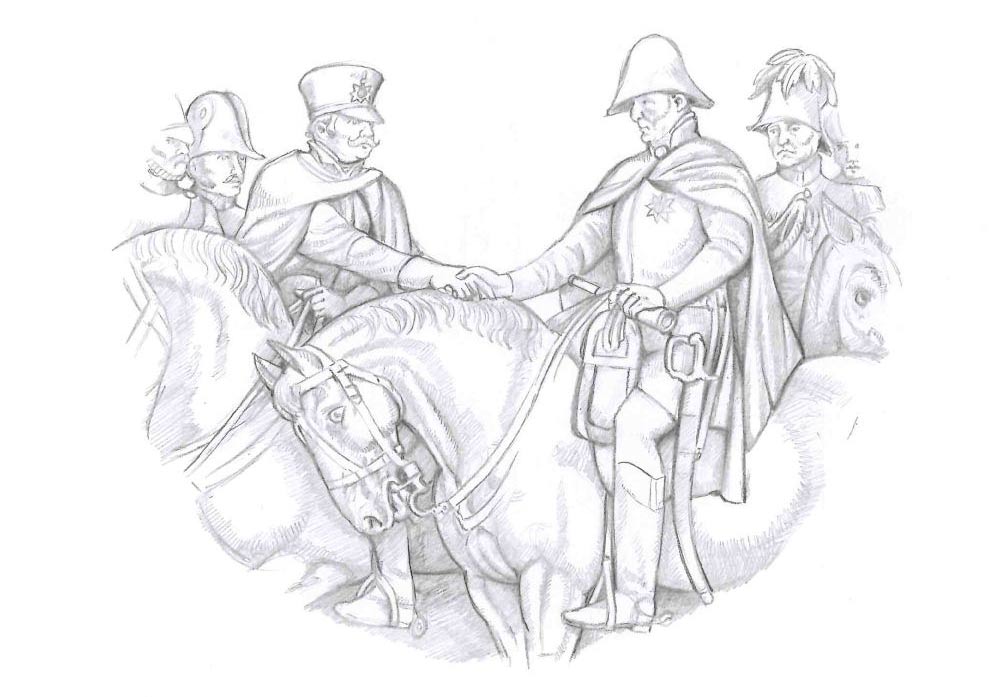
A Tale of Two Sides
The Battle of Waterloo was one of the most decisive battles in history, the final battle of the long running Napoleonic Wars. It brought over 20 years of conflict in Europe to an end and left a lasting legacy on the world.
This decisive battle was fought between an Anglo-Allied force led by The Duke of Wellington, who was closely supported by General Blücher for Prussia, and a French Army with Napoleon at its command. Napoleon hungered for a European Empire and Wellington sought to defend that of Britain. They fought with cannons and
A Battle of Wits
In 1815, on the small island of Elba, a recently exiled Napoleon was planning to exploit the unpopularity of the ruling monarch King Louis XVIII and the instability within France. He returned to France hoping to be greeted as his ‘nation’s saviour’; instead King Louis sent his men to capture him. However, Napoleon was a convincing influencer, and the men sent to capture him soon joined his side. Napoleon was intent on a show of force to win over the rest of France and secure a bargaining position with the Anglo-Allied forces to ensure the expansion of his Empire.
His homecoming instigated a strong response from the Allies and so began a battle of strength and strategy. Napoleon hoped to capture Brussels by the classic ‘divide and conquer’ approach and stationed his growing army at Beaumont, prepared for attack on 15 June 1815. On the opposing side Blücher and Wellington had split their resources, with Blücher taking up post in Eastern Belgium and Wellington in the west of the country. Predicting the Allies’ plan to attack from both sides, Napoleon ordered his favoured commander, Marshal Ney, to tackle Wellington’s arm of the defence in Quatre-Bras, a pivotal crossroads. The Allied troops were defeated but not decimated, leaving a frustrated Wellington declaring, “Napoleon has humbugged me.”
A Story of Fearless Men
The Battle of Waterloo is remembered for bringing a decisive end to the Napoleonic Wars, but it is also famous for the strong characters involved, each fighting for an Empire they firmly believed in.

The Duke of Wellington
Arthur Wellesley, the Duke of Wellington, was a well-respected military and political figure. He had gained recognition in previous battles such as the Peninsular Campaign. At Waterloo Wellington commanded an inexperienced army, unlike his veteran peninsular army; this demanded he utilise strategy and the geography of the land to overcome the enemy. Wellington had a respect for Napoleon despite being his enemy, and was once quoted as saying
His presence on the field made the difference of forty thousand men
Gebhardt Leberecht Von Blücher
Leader of the Prussian Army, Blücher was tenacious and could be described as obsessed with battle – it was his favoured course of action. Blücher was so vociferous that his own subordination meant he was forced to spend several years in retirement.
Over 70 years old when going into the Battle of Waterloo, he was neither fearful of death or of Napoleon, who he had encountered in battle twice before. His ferocity was well-paired with Wellington’s strategic approach and their joint efforts brought about a historic victory.The ultimate role model for confidence and tenacity, Blücher kept his troops motivated and morale high throughout the battle.
Napoleon Bonaparte
Born to a noble family, Napoleon was educated at military school and his career followed that path. He was quickly promoted through the ranks, being made Commander of the French Army in Italy in 1796, ‘consul for life’ in 1802 and within just two years he became Emperor of France.While he had a great impact upon the politics of France, Napoleon was drawn to the quest of creating a European Empire, a quest that would cloud his judgement, resulting in the loss of many of his men and ultimately to his exile and imprisonment.
He did not share a mutual respect for Wellington but he did admire Britain, calling it,“The most powerful and most constant of my enemies.”
Marshal Ney
Marshal Michel Ney, Napoleon’s ‘right-hand man’ and most trusted commander was born in Saarlouis so was able to speak both German and French. Ney’s relationship with Napoleon was strangely formed; he had vowed to capture Napoleon on his return from exile “in an iron cage” but a persuasive Napoleon convinced him to join his forces instead. The relationship proved to be detrimental to both men – Marshal Ney’s ill-timed attack on the Allied troops at Quatre-Bras was a fundamental part of Napoleon’s downfall and Marshal Ney was executed following the defeat. His final words are believed to be courageous to the end, “Soldiers, when I give the command to fire, fire straight at my heart. Wait for the order. It will be my last to you. I protest against my condemnation. I have fought a hundred battles for France, and not one against her... Soldiers Fire!”
The Impact on the Coinage
The final victory at Waterloo brought an end to the conflict that had raged for over two decades and enabled the government to reform the coinage of Britain. Prior to this much of the circulating coinage had been in use for so long that it had been severely worn down, far from the finely-minted coins they once were. And with silver coins in short supply owing to the high prices of silver very small amounts had been struck in the eighteenth century. Relatively soon after Waterloo ending, these worn silver coins were called in for exchange.
Interview with David Lawrence, designer of the Battle of Waterloo £5
Discover great stories from history and how we're celebrating these moments within The Royal Mint
Read more
